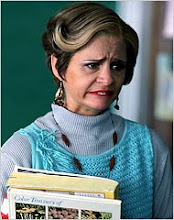
The National Association for Female Corrections Officers is a nonprofit organization whose goal is to eliminate sexual harassment of female officers and to eliminate sexual assault. They also work to improve work conditions and to promote the development of new, cutting edge, technology. The NAFCO proposal includes many legislative reform proposals. The main issue that seems significant to this group is rape and sexual assault of female officers on duty. In their Federal Legislative Proposal, one of the goals is “Develop and implement national standards for the detection, prevention, reduction, and punishment of rape, sexual assault, and sexual harassment of female correctional officers and employees” while many of the other points also deal with rape issues. Another feature of the NAFCO website is the “Memorial” section, which remembers female officers who have been killed on duty. The most recent woman to die on duty was Darla Kay Lethram in 2003, who was supervising a group of inmates who beat her to death with a sledge hammer in an escape attempt. I thought the stories listed in the memorial were shocking tales of violence on the job and personally I think they go against what Britton says are the realities of prison life. However, if you look at the dates of these female officer who have died, there are not very many considering the span of years that it covers, from the early 20th century to today.
Compared with Britton’s suggestions, NAFCO’s suggestions are fairly similar and ideological for the prison system. Britton writes, “Racism and sexual harassment remain obstacles and should be more aggressively addressed.” NAFCO is an organization that addresses issues of sexual harassment aggressively. Also, both Britton and NAFCO are advocates for better and more realistic training programs. “Women have proven that they can perform the previously unimaginable task of working in men’s prisons. Many of them…are quietly and gradually transforming what it means to be an officer within the confines of the prison’s iron cage.” (Britton p. 226). This statement that Britton makes at the end of her book is significant because it proves that women are capable of holding and succeeding in the same jobs as men. Women need to be acknowledged more in this type of career so that society will not view the prison system as such a gendered organization. With help from organizations like NAFCO and continued awareness in the media through books such as “At Work in the Iron Cage” or newspaper articles that feature women guards, slowly the prison career will become one for all people and not just white males.







